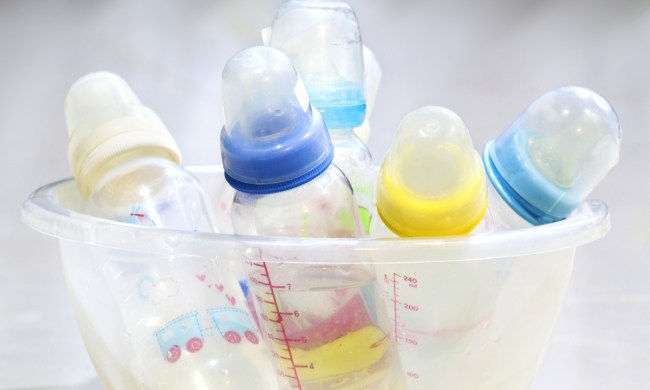Whether you’re about to become a new parent for the first time or the fifth time, you’re probably nervous thinking about your infant’s sleeping arrangement. As parents, everyone wants to make the perfect decision, and while perfection may not exist, we’re here to help you make the most well-informed decision regarding your baby’s sleeping arrangement. The bassinet versus crib debate has always been an ongoing one, but before we jump into which one is best, let’s discuss the basics of newborn sleeping.
If possible, according to the American Academy of Pediatrics, make sure your baby sleeps in the same room as you for their first six months, if not a year, to reduce the possibility of sudden infant death syndrome (SIDS). However, new studies show that your newborn can sleep in their own room at 4 months old. Just take care not to share a bed while sleeping with your newborn, in addition to keeping pillows and blankets away from your sleeping baby, with the exception of swaddling. Finally, a firm mattress and placement on their back will give your infant a sound and safe sleep.
Now let’s talk bassinets and cribs!
The basics of the bassinet
Let’s get down to it: A bassinet is a small cradle designed for newborns up to 4 months old or until they reach about 20 pounds. They are circularly shaped with sides made of various fabrics to provide your little one comfort while keeping them secure. The height of the bassinet usually comes to an adult’s waist, making it easy for you to put your baby down or glance over at them if you’re in bed.
Whether you had a vaginal birth or a C-section, the recovery process isn’t easy, especially when you have to care for a newborn. Thanks to their height, bassinets are helpful when it comes to laying your newborn down because it’s less exertion for you. Another bonus of the bassinet is its mobility. You can easily place a bassinet next to your bed or the couch to keep an eye on your little one wherever you are and have your newborn nearby while you sleep.
The downfall of the bassinet is that after month four, a bassinet can become dangerous for your infant once they start moving around — the last thing we want is a tipping bassinet once your baby learns to roll over. While a bassinet is initially cheaper than a crib, you only get a few months’ use out of it, so a crib is coming your way eventually.
Crib characteristics
If you’re nervous about stability, perhaps you may want to opt for a crib from the get-go. Made from durable wood materials and tall sides, the frame of a crib is as sturdy as your own bed. Plus, you can even get a convertible crib to grow with your child — some cribs can be changed into a toddler bed. Whether you opt for a convertible crib or a non-changing one, cribs are definitely a long-term investment. If you plan on having more kids, odds are that the crib will be able to last through every child.
A con of the crib is that it can be physically difficult to put your baby down post-birth because the mattress lays deep within the crib. Bending over may not be in your best interest if you are having a difficult recovery. Depending on your space, you may not be able to install a crib in your room due to the nature of the crib’s size and stationary design. However, because cribs are so large, some of them have fun features like extra drawers or an attached changing table.
Which one is better?
There are a lot of details to consider, so let’s quickly break it down:
- Size: Bassinets are a lot smaller than cribs, making them the ideal choice to place in your bedroom.
- Cost: A bassinet is initially cheaper, but eventually, you’ll have to buy a crib to support your growing baby.
- Time: A crib can be used well into toddler years, while bassinets have a short life span in terms of usage.
- Mobility: The bassinet is both easy to move around your home and for you to pick your infant up from. Although cribs may seem stuck in place, they are definitely the sturdier option.
The key takeaways? There are significant differences in size, mobility, and location. Only you can decide which factors are most important to you, but we can all agree that safety reigns supreme. As long as you follow the recommended timelines, your infant will be in safe hands — or, rather, a safe bed. The crib is better for long-term investment and stability, while the bassinet offers you space and mobility. The two sleeping arrangements offer two very different things — only you can decide what works best for you and your baby.


